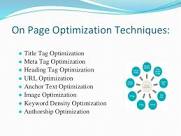1. Introduction
According to the Annual Report 2015 of IBM, the current strategic imperative revenue mix of the company, against the market get noted as follows –
Source: IBM (2015)
It has been clearly marked in the current competitive market scenario, IBM has considered its strategic imperatives as significant elements to its management process. Its expansion in the fields of analytics, cloud, mobile, security, and social context remains successful in gaining 27% of its total revenue of $25 billion in the year 2014. With the establishment of 3,000 patents in 2014, the company acknowledges that it is the capacity and efficiency of its human resource (HR) that integrated technology in accordance to the business proceedings the clients, and adding success to the company on a worldwide basis.
Considering developmental approaches of IBM as the core subject, this research is offering a research on the ways the Human Resources are recruited, generated, maintained, and further retained in IBM. The approach is in gaining information about the strategic management formulations as considered by IBM in being able remain competitive in the global market. For this purpose the official declarations of IBM, like Annual reports and news articles will be considered. Further analytical overview will include various theories, peer-reviewed journal articles, and literary sources for the understanding of Strategic Human Resource Management, with close study of the practices in IBM.
1.1 Research Question
Is it possible for any company to follow the SHRM formulation of IBM in order to sustain and grow in the current global market?
1.2 Research Purpose
The core purpose of this report is to analyse the SHRM of IBM, in order to gain necessary knowledge about the implementation of strategic theories and practices in the HR domain for organisational success. As under the intensive pressure of globalisation, the companies are facing enormous hurdles in recruiting the right employees, train & motivate them, and get most strenuous in retaining valued employees; this research aims to offer the tips and tricks of IBM in resolving these issues in particular.
1.3 Research Rationale
As against many competitive software companies, like Accenture, Hewlett-Packard, Apple, etc., IBM with 379,592 employees, excels itself in the process of recruiting, training & motivating, and retaining employees for organisational growth and long term sustainability in the market (IBM, 2014). Its achievements and growth makes it one of the most best place for generating a good career for an employee (IBM, 2015 a). This is the reason that IBM justifies itself as an ideal organisation to understand its HR strategic management for the upliftment of those companies that still strive to gain more potentiality in global market. By considering the HR management strategies of IBM and its experiences in dealing with various issues and risks of the market, there can be a real understanding of initiating a business in the global marketing scenario.
2. Literature Review
Boote & Beile (2005) stated the purpose of literature review in a very comprehensive manner. For these researchers, the purpose of the literature review in a research is to evaluate different studies that are connected to research question and objectives. In this approach, the current research aims in describing or summarising, evaluating and further comprehending the content of different literary sources. The aim is to identify the elements and features of IBM’s SHRM that has made it so successful in the international marketing domain. The selection of the literary sources, with be very limited and specifically in context of the research topic (Kirby, et al., 2006). However, some of the data research in quest of establishing the relationship of the literature review with the current research.
2.1 Strategic HR Management
According to Hunt (2014), the strategic management for a firm is about creating the craftsmanship in the management process, formulating and generating resources and implementing as well as evaluating the approaches under cross-functional scopes for achieving organisational objectives. In reference to the developmental approaches of SHRM, Monahan (2008) states that in order to improve HRM in an organisation, there is the need to develop interactivity among the members. It is through interactive provisions that the company can have increased rates of effectiveness and excellence in the performance of the HR.
2.1.1 Common Global Practices
The report of Dermol and Rakowska (edts. 2014) about the application of SHRM in the global periphery marks the aspects of demographic changes that are creating hudles in cross-cultural communications. Moreover, these scholars noted that organisations are regularly facing lack of talented staff and professional employees, who can assist in managing organisational diversity and create potentiality at the workplace. Thus, it has been clearly noted that the strategic HR management in the current international market is more concerned about the gaining platforms of diversity management for handling cross-cultural working environment. research led by Söderlund & Tell (2011) refers to the process of team building through various employee programs and deployment of temporary tasks among the employees from different cultures. The inclusion of the ideology that the ‘the organization of resources is equally important as the resources themselves’ (Söderlund, 2011). The core purpose of global approach to SHRM is related to the recruitment and creation of professional experts and further retaining them for developing successful work patterns within the organisation.
2.1.2 SHRM at IBM: A Case Study
As the issue of diversity management appears to be the core matter of concern in the process of organisational development, this research is considering the SHRM of IBM as a case study.
International Business Machines Corporation or IBM, is recognised as a MSC in the field of IT consultation and computer technology. With its corporate headquarter in Armonk, North Castle of NY, US; IBM is successful in establishing its business in almost every major nation of the world. It is an IT firm that was established in 19th century with the aim to manufacture as well as sell computer software and hardware, along with services in the domain of infrastructure, hosting, and consultations from computers to the sector of nanotechnology (Selinger, edt. 2006).
However, the reason for selecting IBM as the case study for this research is due to the multicapability of the IBM hr in generating excellence in diversified fields. As stated in the IBM Annual Report 2015, IBM is currently creating a complete ‘new generation of critical systems’ that is efficient in offering its clients with the provisions for ‘exploring a cure for cancer, unclogging city traffic, reducing risk, improving the safety of food supplies, and serving their own employees, customers, citizens and patients with greater levels of understanding, personalization and intimacy’. For all these scopes, IBM is the owner of the HR team that is not only professionally specialised; but are dedicated employees, committed to serve the organisation on a long-term basis.
2.2 Theory to Praxis
For the current research, there are two theories that are considered for understanding the relevance of SHRM and necessary approaches to gain maximum effectiveness, amidst global competitive market. For this purpose, this research is concentrating on the theories of Diversity Management and Creative Destruction. It is through these theoretical approaches on practical field of IBM that this research paper will bring in the elements for recruiting right candidates, training and motivating them for organisational success; and retaining those who are assets to the company.
2.2.1 SHRM Theories
The two SHRM theories selected for this research are – Diversity Managementand Creative Destruction.
Diversity Management
Kunze, et al (2011) derived that there are innumerable research works that are laying emphasis on the implementation of diversity management in MNCs and those organisations that are planning to go international, in order to gain positive responses in the workplace environment. Attempts are made in terms of collecting the interconnectivity between diversity management and the performance of the organisation. Studies analysed by Joshi & Roh (2009) mentions the importance of climate and culture maintenance within an organization, especially in context of stereotypes of the staff members and the executives about the issues related to age, gender, race, origin, etc. A meta-analysis led by Pekka & Seija (2011) states that ignorance of an organisation to the aforementioned employees’ stereotypes laid negative impact over the success process of the company and thus inclusion of diversity management, where the employees are trained to maintain equality at the workplace gains extensive emphasis.
Creative Destruction
The theoretical approach of Schumpeter in generating creative destruction within an organisation aims in removing the notion of capitalism, which is noted for ‘incessantly revolutionizes the economic structure from within, incessantly destroying the old one, incessantly creating a new one’ (Schumpeter, 1942, p. 82). According to Kirchhoff, et al (2013) creative destruction as noted by Schumpeter is the demand of contemporary international business approach. Under this theoretical loom, the companies need to consider novel production process, products, resources, marketing formulation and organisational forms; as per the new market. Carayannis, et al. (2007) referred that innovation should be added to the skill of entrepreneurship and the HR of the organisation should be able to complement external business atmosphere with internal working environment. For this purpose, destruction of current organisational trend with enough creativity is important for gaining flexible approaches as per new international markets.
2.2.2 Implementation at IBM
Selection of IBM for understanding the theoretical approaches of Diversity Management and Creative Destruction in managing HR strategically, is done on the basis of multicultural amalgamation of employees noted within IBM. As observed by Thomas & Kanji (2004) strategic formulation for managing HR within IBM is unique as it promotes diversity in its workplace. Recruitment of women employees, employees from Afro-American origin, disabled employees are part of the system without any discrimination. Moreover, its employees list includes Asian, gay & lesbians, black and brown, Hispanic origin, Native Americans, etc. IBM thus, even holds the prestigious recognition of 2013 Diversity Inc from being at the Top 10 Companies of the Global Diversity list (Thomas & Kanji, 2004).
2.3 Current Issues
According to Lockyer and Scholarios (2005), Zingheim, et al (2009), Wartzman (2011) and Kaufman, et al (2015); in last decade the basic issues faced by most of the companies in the global scenario are related to the issues of recruiting professional employees, right kind of training and motivational strategies for organisational success; and retention of employees who are supporting the company at the best.
Pl see more at : http://www.findtutoronline.net/blog
Suggestions & feedback as most welcome.








